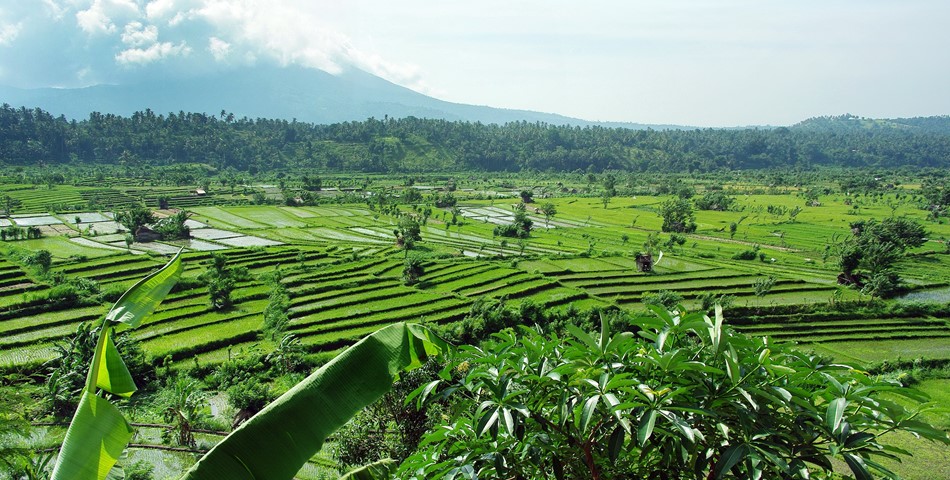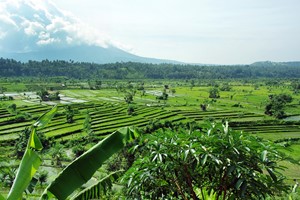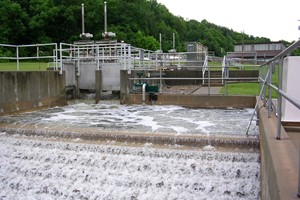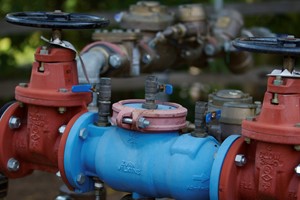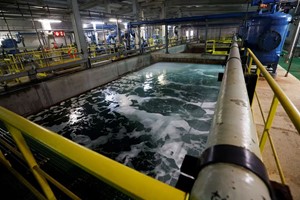Overview
Indonesia contains about 21% of the total water resources in the Asia-Pacific, equal to about 6% of the world's total. It is not a water-scarce country, but poor water management, limited infrastructure and rapid economic development has driven scarcity in parts of the country. Java, where almost 60% of the population lives, has less than 10% of the country's water. Kalimantan, on the other hand, has 6% of the population and 30% of the water. Due to Indonesia's physical geography it is not possible to redistribute water from areas of abundance to areas of scarcity. The warm waters that surround Indonesia create a relatively stable equatorial climate. Monsoons drive seasonal variations and bring considerable amounts of rain during the wet season. While rainwater harvesting is becoming more popular, it is still underdeveloped. Climate change, however, has the potential to disrupt the established alternating dry and wet periods that it usually experiences, possibly leading to drier conditions in the future. The dry season could become more arid, leading to greater demands for water. The wet season, on the other hand, could be shorter and more intense. If this occurs, parts of the country are likely to become increasingly susceptible to flooding and it will be increasingly challenging for this rainfall to be captured and stored. While the country has enough water to satisfy the needs of its 255 million citizens, its uneven distribution means that sections of the country are considered water scarce. The Indonesian Government aims to ensure universal access to sanitation and drinking water by 2019. In 2015, 32.3 million Indonesians, approximately 13% of the population, did not have access to clean water sources. While the situation has improved compared to a decade ago, progress is not occurring at a rate fast enough to suggest that the entire population will have access by 2019. In the long-term, the situation is unlikely to be significantly different and by mid-century Indonesia is likely to suffer from high water stress, according to the World Resources Institute. Rapid economic growth across the country has not been accompanied by infrastructural development. Changing land-use patterns, deforestation and the spread of extractive industries have altered the natural landscape, left many areas susceptible to floods and increased the incidence of water pollution. By 2030, the Indonesian population is projected to increase to 295 million. The majority of the population will live in cities. At the same time, the level of industry could increase. President Joko "Jokowi" Widodo has a focus on making Indonesia a center for manufacturing. These developments, if they come to pass, will place greater pressure on the country's water supply, particularly as Jokowi also desires to increase agricultural production.
Increasing demand for water
The agricultural sector is the main consumer of water, with some 80% of surface and ground water is used for the irrigation of crops. The industrial sector faces considerable challenges, however, as Indonesia could face increased competition from other South-East Asian countries. Securing foreign investment could prove difficult as supporting infrastructure, such as electricity and transport networks, remains underdeveloped compared to elsewhere in the region. The sector has also declined for the past 17 months, suggesting that it could continue to face considerable challenges in the future. If industrial sector growth recovers, competition for water between it and the agricultural sector will also rise. Industry also has the potential to pollute water sources, further diminishing water security. The Citarum River in West Java, for instance, has been labelled the dirtiest river in the world due to the high level of consumer and industrial waste littering its waters. More than 35 million people continue to rely on it for drinking and washing water, despite some nearby village wells containing four times the recommended safe levels of mercury. It also supplies surface water to Jakarta, the city of Bandung, the greater Jakarta region and irrigates 5% of Indonesia's rice farms. Regulations prohibiting the dumping of waste and effluent into waterways exist, but are poorly enforced. The disposal of waste is a major problem, as landfill sites struggle to deal with the 64 million tons that Indonesians produce each year. Recycling could reduce some of the pressure, but it has been slow to develop. The process is also costly for municipalities to implement and can be expensive to operate. The alternative is likely to be far costlier, however, as cities and waterways continue to choke on waste, much of which could be repurposed and reused.


Developing water infrastructure
The Public Works and Housing Ministry has the largest budget allocation for 2016 at USD10.8 billion. The Indonesian Government continues to focus on improving the amount of water available to the agricultural sector. There are currently 22 dams under construction across the archipelago and USD952 million has been earmarked to begin building another eight in 2016. The 2016 infrastructure budget is the highest on record, but given the slow pace of government spending and regulatory hurdles, this might not lead to greater infrastructural development. Some of these dams have faced considerable hurdles in their construction. The filling of Jatigede Dam, the country's second-largest, was delayed due to difficulties in the relocation of local residents who refused to move from the area. Many of the residents argued that the terms of the compensation package they received were unfair and did not adequately cover the cost of relocating. Local concerns present another challenge to the development of water resources throughout the country. Dams will benefit the agricultural sector, at least in the short-term, as they allow for the wider adoption of irrigation. Once demand for water surpasses the capacity of the dam, however, the agricultural sector is in the same predicament it was before. Addressing demand-side pressures will also help to ensure long-term water security. Dams are unlikely to solve the problems faced by the Indonesian water sector. Failing to develop and maintain other water infrastructure will only worsen the situation. According to the World Health Organization and the United Nations, only 22% of Indonesians had access to water piped onto their premises in 2015. This lack of water infrastructure leads to negative health, economic and human development outcomes. Without the infrastructure to get clean water to where it is needed, the security of residents and industry will remain tenuous.
Increased water pollution
Water pollution has an impact upon human health, the economy and industrial growth. Poor quality water sources have been linked to increased cancer rates, skin disease, mental illness and slow childhood development. Water shortages and increased pollution can force businesses to shut down. Industries in cities, such as Jakarta and Surabaya, have been forced to close during dry years due to a shortage of clean water. Fisheries and aquaculture have also been adversely affected as poor quality water damages fish stocks. According to the 2012 Demographic and Health Survey, bottled water is the most common source of treated water in Indonesia with close to 30% of the population regularly purchasing it. Relatively few Indonesians have water piped into their dwelling and most rely on protected wells. Those that obtain drinking water from non-improved sources do so mainly from unprotected wells, springs, rivers and streams. Nationally, 70% of the population use an appropriate water treatment method, such as boiling, bleaching, straining or filtering, prior to consuming water. Increased rainfall and flood conditions, as a result of climate change, could make water-borne disease more prolific. Floods can rapidly overwhelm urban infrastructure, leading to sewage spill-over and the contamination of fresh water sources. Without adequate infrastructure to protect and treat water, the likelihood of water-borne disease pandemics increases. Poorer Indonesians are particularly exposed to poor quality water. Those that reside in urban slums lack basic sanitation facilities and are less likely to be connected to wastewater treatment plants. These areas are at higher risk of water-borne diseases such as cholera, dysentery, gastroenteritis, typhoid and hepatitis A. Improving access to sanitation facilities and clean sources of water as well as increasing awareness of proper hygiene practices will help to reduce the spread of disease.


Water security to 2030
Indonesian water security is likely to continue to improve up to 2030, but universal access is unlikely to be achieved by this time. As the population continues to grow and economic diversification puts increased stress on the water supply, it is vital that efforts to improve and expand the distribution network continue. The poor results of water privatization in Jakarta suggest that the government is best placed to ensure that water infrastructure is built in an equitable manner for the benefit of all Indonesians. To date, however, it has appeared unwilling to invest in water infrastructure that will improve social and economic outcomes.
Email: info@futuredirections.org.au
Web: www.futuredirections.org.au




